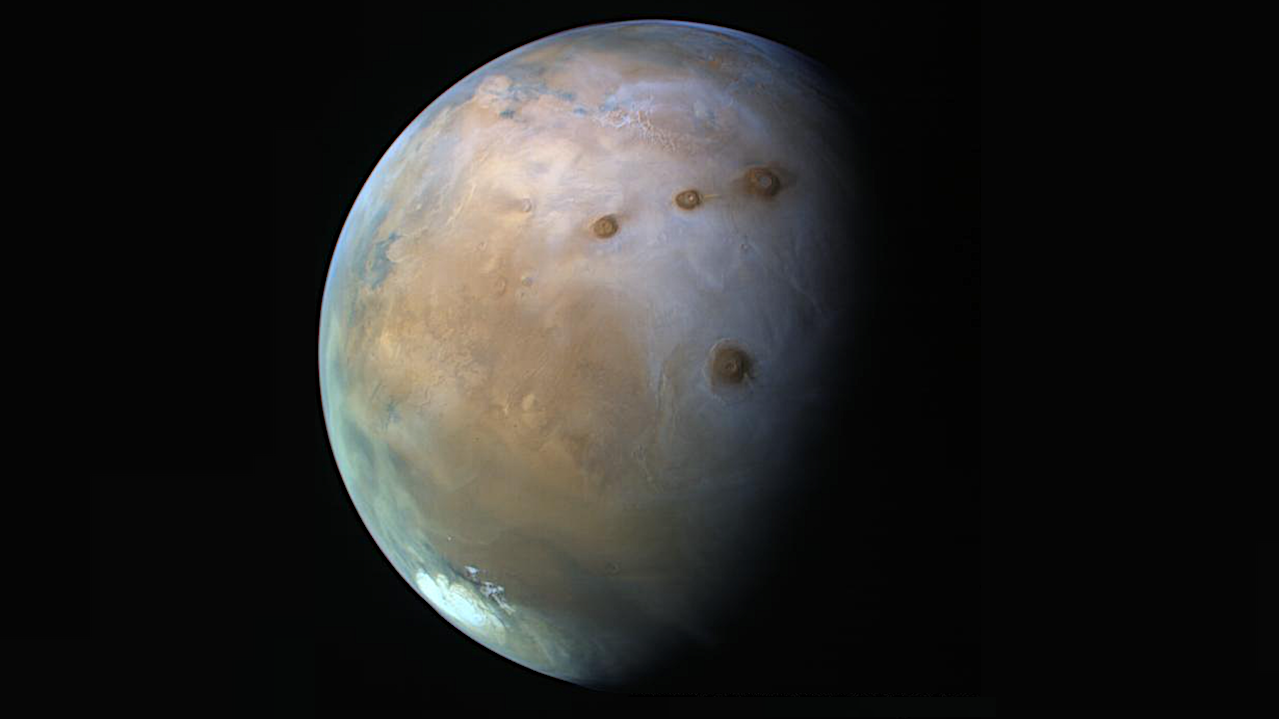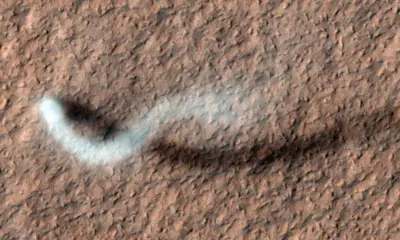Science
Cosmic Rays Could Enable Life Beneath Mars and Icy Moons

A groundbreaking study from NYU Abu Dhabi reveals that high-energy particles from space, known as cosmic rays, could support life beneath the surfaces of planets and moons in our solar system. This research, led by Dimitra Atri, Principal Investigator of the Space Exploration Laboratory at NYUAD’s Center for Astrophysics and Space Science (CASS), challenges the long-held belief that life can only thrive in sunlight or near volcanic heat.
Published in the International Journal of Astrobiology, the study focuses on the interactions between cosmic rays and water or ice found underground. When cosmic rays collide with these substances, they break apart water molecules and release electrons, which certain bacteria on Earth can utilize for energy. This process, known as radiolysis, suggests that life could persist even in environments devoid of sunlight and warmth.
The research team employed computer simulations to measure the energy produced through this process on Mars and the icy moons of Jupiter and Saturn. Their findings indicate that Enceladus, Saturn’s moon, holds the greatest potential for supporting life, followed by Mars, and then Europa, one of Jupiter’s moons.
Rethinking Life’s Habitats
“This discovery changes the way we think about where life might exist,” said Atri. “Instead of looking only for warm planets with sunlight, we can now consider places that are cold and dark, as long as they have some water beneath the surface and are exposed to cosmic rays. Life might be able to survive in more places than we ever imagined.”
The study introduces the concept of the Radiolytic Habitable Zone, which contrasts with the traditional “Goldilocks Zone.” While the Goldilocks Zone refers to areas around stars where conditions are just right for liquid water, the Radiolytic Habitable Zone emphasizes underground environments that can be energized by cosmic radiation. This perspective expands the potential locations for extraterrestrial life significantly.
Implications for Future Exploration
The implications of these findings are profound for future space missions. Rather than solely searching for signs of life on planetary surfaces, scientists have new avenues to explore underground habitats. Missions to Mars and the icy moons may incorporate tools designed to detect chemical energy generated by cosmic radiation.
This research paves the way for an exciting new chapter in the quest to discover life beyond Earth. It suggests that even in the darkest and coldest corners of the solar system, the right conditions for life to endure may exist, transforming our understanding of where life can thrive. The quest for knowledge about the universe continues, and this study opens doors to previously unconsidered possibilities.
-

 Technology5 months ago
Technology5 months agoDiscover the Top 10 Calorie Counting Apps of 2025
-

 Health2 months ago
Health2 months agoBella Hadid Shares Health Update After Treatment for Lyme Disease
-

 Health3 months ago
Health3 months agoErin Bates Shares Recovery Update Following Sepsis Complications
-

 Technology4 months ago
Technology4 months agoDiscover How to Reverse Image Search Using ChatGPT Effortlessly
-

 Technology1 month ago
Technology1 month agoDiscover 2025’s Top GPUs for Exceptional 4K Gaming Performance
-

 Technology2 months ago
Technology2 months agoElectric Moto Influencer Surronster Arrested in Tijuana
-

 Technology5 months ago
Technology5 months agoMeta Initiates $60B AI Data Center Expansion, Starting in Ohio
-

 Technology5 months ago
Technology5 months agoRecovering a Suspended TikTok Account: A Step-by-Step Guide
-

 Health4 months ago
Health4 months agoTested: Rab Firewall Mountain Jacket Survives Harsh Conditions
-

 Lifestyle5 months ago
Lifestyle5 months agoBelton Family Reunites After Daughter Survives Hill Country Floods
-

 Technology4 months ago
Technology4 months agoHarmonic Launches AI Chatbot App to Transform Mathematical Reasoning
-

 Technology3 months ago
Technology3 months agoUncovering the Top Five Most Challenging Motorcycles to Ride




















